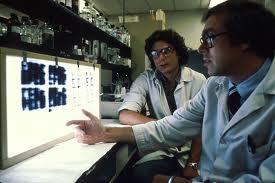Canadian and Us Researchers Make Headway in Gulf War Illness
Most recent published pilot research project (abstract included below) on Gulf War Illness by combined research between University of Miami, Miami VA and University of Alberta in Canada is showing a complex disorder involving the nervous, endocrine and immune regulation systems points stronger to an auto immune component to Gulf War Illness. This was a small pilot study to test their hypothesis which involved 9 Gulf War Veteran and 11 control subjects, but it does appear to confirm their connection.
 It also boost the gulf war veterans that this is indeed REAL. Autoimmune disorders can involve the total of body systems and the list of autoimmune disorders are quite numerous. But the real break through here is that it should allow the physican health care team in the VA to start becoming more actively involved!
It also boost the gulf war veterans that this is indeed REAL. Autoimmune disorders can involve the total of body systems and the list of autoimmune disorders are quite numerous. But the real break through here is that it should allow the physican health care team in the VA to start becoming more actively involved!
The health care providers need to have this information as soon as possible. It is up to the Gulf War Veterans to be truly active participants in their health care and to make copies of this abstract and distribute it to their health care providers and to stand up and encourage their health care providers to start real testing for autoimmune disorders that are available.
It is only through active patient involvement that they will be seen more by physicians involved with testing and managing autoimmune disorders instead of being turfed out to the mental health clinic providers and psychology instead of doctors that know how to diagnose and treat autoimmune disorders. So word to the wise gulf war veterans that have suffered long enough. It is time to say Enough! It is up to each and every one of you to be involved and speak up for your health care now.
Our acknowldegement to Dr Nancy Klimas for collaborating with the Canadian researchers at the University of Alberta in Edmonton, Canada. Which reminds us all that we had Canadian forces involved in Operation Desert Storm and they are ill! We need to hear from our Canadian Gulf War Veterans that were part of the Coalition. There is also a need to have more of the coalition forces speaking up, staying involved, and pushing for their medical researchers to get more involved.
Brain Behav Immun. 2011 Feb;25(2):302-13. Epub 2010 Oct 16.
A pilot study of immune network remodeling under challenge in Gulf War Illness.
Broderick G, Kreitz A, Fuite J, Fletcher MA, Vernon SD, Klimas N.
Department of Medicine, University of Alberta, Edmonton, Canada.
Abstract
Gulf War Illness (GWI) is a complex disorder affecting nervous, endocrine and immune regulation. Accordingly, we propose that GWI presents with a distinct pattern of immune signaling.
To explore this we compared interaction patterns linking immune markers and their evolution during exercise. Blood was collected from 9 GWI and 11 control subjects prior to a Graded eXercise Test (GXT) (t₀), at peak effort (t₁) and 4 h post-exercise (t₂).
Salivary cortisol and plasma, serum or culture supernatants were analyzed for concentrations of neuropeptide Y (NPY), IL-1α, IL-5, IL-6, IL-10, TNF-α, IFN-γ and soluble CD26 (sCD26). Immune cell populations were surface stained for CD19, CD2, CD3, CD4, CD8, CD26, CD56, CD16, and CD11a. Mutual information (MI) networks linking these immune markers were generated in each group at each time point. Graph theory was used to describe the evolution of each network’s structure and identify potential nucleating points.
Distinct in topology, GWI networks had more abundant connections but were less organized. NPY, IL-1α, TNF-α and CD2+/CD26+ nodes were better integrated in the GWI network at rest. Under effort (t₁) these differences were replaced by significant restructuring around nodes for CD19+ B cell population, IL-5, IL-6 and soluble CD26 concentrations. This pattern subsided post-exercise. Further analysis indicated that IL-1α and CD2+/CD26+ nodes strongly influenced this characteristic modulation of B and T cell network motifs.
This potentially heightened lymphocyte and HPA axis responsiveness to IL-1 stimulation in the context of a mixed Th1:Th2 immune signature supports an autoimmune component in GWI etiology.
Copyright © 2010 Elsevier Inc. All rights reserved.
ATTENTION READERS
We See The World From All Sides and Want YOU To Be Fully InformedIn fact, intentional disinformation is a disgraceful scourge in media today. So to assuage any possible errant incorrect information posted herein, we strongly encourage you to seek corroboration from other non-VT sources before forming an educated opinion.
About VT - Policies & Disclosures - Comment Policy



